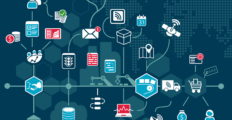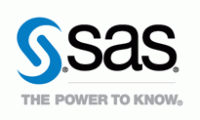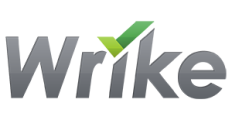Remote work is here to stay and will grow until 2023, meaning paper forms, file folders, and filing cabinets will no longer suffice. You will need a system to help you manage employees not only in the office but those in different parts of the country or the world. It’s high time to embrace the new era of Human Resources Information Systems (HRIS). But what is HRIS, you ask?
HRIS is a system or software that helps you manage your workforce, and it is something vital, especially now when people can work remotely. To help you keep up with HR developments and manage your employees better, this page explains everything you need to know about HRIS, including features, benefits, costs, and the top HRIS systems.

Detailed Guide to HRIS Table of Contents
According to Statista, COVID-19 had a significant impact on HR technology. Many workers lost their jobs as a result of company furloughs or downsizings, and those who remained began working remotely due to COVID-19 restrictions and precautions. As a result, a large portion of human resource work had to be done remotely, and the need for solutions such as HRIS software became critical. It may seem like now that as the pandemic is nearing its end, the need for HRIS will diminish.
However, while some companies are now requiring employees to return to the office, this transition is proving difficult. In 2021, 87.4% of global respondents indicated that remote work is an important factor in future employment decisions, with 48.4% saying it is extremely important. In the same vein, Ladders predicts that remote work will not disappear. Instead, it will account for 25% of all professional jobs in North America by the end of 2022 and will continue to grow through 2023.
Ladders reports that remote opportunities increased from 4% prior to the pandemic to 9% by 2020 and then to over 15% today. The continuously changing market dynamics of business models induce digital transformation, forcing HR teams to continue adopting innovative ways to respond to workforce needs.
Source: Statista
HR software for small businesses and enterprises alike will continue to thrive. Those that include talent management, workforce management, and payroll management are expected to grow in popularity in the coming years. According to Fortune Business Insights, the global market could grow at a 5.8% CAGR from $24.04 billion in 2021 to $35.68 billion in 2028.
Existing businesses are modifying their business models and products to allow for various work settings like office-based, hybrid, or fully remote. A similar pattern is emerging with startup niche products. This ever-changing workforce landscape and the emerging tech trends are redefining HR management, and the use of HRIS will continue to be a fruitful adoption.
What is HRIS?
HRIS stands for human resources information system, a solution that maintains, manages and processes detailed employee information as well as HR policies and procedures. It standardizes HR tasks and processes while facilitating accurate record-keeping and reporting.
HRIS allows HR teams to automate processes and work electronically, and it can help businesses of all sizes run more efficiently. HRIS can help with everything, from accounting and payroll to employee management and cost planning. The purpose of HRIS is to digitize your workflows and data management with little to no error, essentially eliminating paper-based and manual HR processes and allowing you to focus on more strategic and high-value work.
How does HRIS work?
HRIS helps businesses use technology to improve HR and organizational efficiency. So they may be better able to adapt to changing workplace trends.
An HRIS organizes and manages personnel data such as:
- Employee demographic data like birth date, gender, and contact info
- Employee job information like position, department, pay rates, and more
- Choices of benefits
- Balances and requests
Because all the data are collected in one place, it is easy to create reports that can be used to spot trends and make business decisions.
What does HRIS do and how is it different from HRMS and HCM?
The definition of HRIS software could easily interchange with that of HRMS and HCM. While HRIS does relate to HRMS and HCM, there are subtle differences among the three.
- Human resource information systems (HRIS): Handles basic HR functions like payroll and personnel record keeping. Most small firms can get by with this entry-level software.
- Human resource management systems (HRMS): It is HRIS plus, a layer of analytical reporting to help small-business owners and executives justify planning decisions. It includes payroll and timekeeping services, along with compensation analysis, workforce predictions, and more, altogether allowing comprehensive talent management.
- Human capital management (HCM): Handles higher-level ideas and practices of HR administration, starting with payroll and going on to include complex issues like foreign labor legislation compliance.
Source: Statista
Types of HRIS
HRIS can be categorized by the following types:
- Operational HRIS functions enable stakeholders to make operational-level decisions. Among the typical operational HRIS modules are Employee Information System and Position Control System.
- Tactical HRIS functions assist in making sound decisions about the use and allocation of human resources. Examples of these are Job Analysis and Design Information System, Recruiting Information System, and Compensation and Benefits Management System.
- Strategic HRIS supports strategic decision-making by providing data to underpin workforce planning and forecasting future needs through Workforce Planning Information Systems for instance.
- Comprehensive HRIS is an end-to-end system that includes all of the above HRIS software types and more. It is a combined platform with access to an integrated HR database for reporting, analytics, and decision-making.
Features of HRIS
While vendors would typically highlight specific functions in their HRIS software that others lack, but sometimes may not be necessary to your business needs. Here are some HRIS features that would prove useful regardless of your industry type.
- The basic HR function is concerned with the management of employee information such as demographics, history, job-role details, withholding tax, and so on.
- Centralized storage gathers, stores, and displays current, consistent information about personnel, policies, and procedures in a single location. It can be seamlessly integrated with other HR modules to improve end-user accessibility.
- The employee benefits feature allows employees to review their benefits information self-service and streamlines open enrollment periods. When their circumstances change, they can make approved changes to their benefit information.
- Employee self-service allows employees to view and manage their personal information (profile, time off, benefits, or payroll), saving HR staff time on mundane clerical tasks.
- The payroll function automates employee pay schedules while also storing time and attendance data. It also allows employees to enter their own leave information for approval by a manager.
- Performance management ensures that personnel and departments are working effectively to meet the company’s strategic goals. Employees can also complete training and surveys remotely, increasing involvement. The data generated can be used for goal-setting, developmental and training needs, and self-assessments.
- The recruitment management and onboarding feature enables HR professionals to reach a large candidate pool when jobs become available, apply selection criteria to applications received, track candidate information and resumes, analyze the job-candidate matches, and process new hires quickly via mobile access.
- Talent management benefits employees at every stage of their employment, from recruitment to training, development, and retention, while employers gain a unified view of their talent profile across the board and align their talent management efforts with overarching corporate goals.
- The time and absence management function allows for easy and accurate tracking of time and leave, as well as self-service functions that allow employees to encode their leave requests.
- Training management allows you to keep track of your employees’ qualifications, certifications, and skills. Organizations can respond by providing training experiences to improve staff engagement, job satisfaction, and retention.
Benefits of HRIS
So, why use HRIS?
All HR software like HRIS is useful, especially when your need for detailed employee data grows along with your business. You need to keep track of employees’ contact info, salaries, and benefits. The advantages of HRIS include having centralized data that your HR department can parse to streamline HR processes. Besides, your company stays organized and compliant, not to mention working efficiently with automated applicant tracking, payroll processing, and custom reports when choosing an HRIS.
- Organizing and Centralizing Data: Prior to cloud storage and high-speed computing, HR professionals had to gather employee data manually. This usually meant using paper documents, filing cabinets, and manual processes. HRIS, meanwhile, creates a searchable database of items for administrators.
- Facilitating HR Work for Efficiency: HRIS saves time for HR professionals by storing, retrieving, and editing employee data. Then the timecards are validated and the payroll is processed. Because an HRIS automates tasks, HR professionals can focus on new company-wide initiatives. They can quickly respond to employee trends and work to build an engaging company culture.
- Ensuring Compliance: Whether you are dealing with HIPAA, WARN, or any other major HR-related law, HRIS helps you stay on the right side of the law and avoid costly penalties.
- Improving Company Image: Your non-HR employees will notice the difference once you implement an HRIS since they will be able to manage their time cards and request vacation time more easily through the system. Investing in an HRIS shows your employees that you value them.

Examples of HRIS
BambooHR
BambooHR provides a complete workforce management solution, enabling small and growing businesses to migrate data from complex spreadsheets to a modern HRIS tailored to their needs. It helps manage all aspects of an employee’s life cycle, including retention and turnover. Freed from manual handling of HR tasks, your HR professionals can focus on more important activities.
This software is ideal for SMBs and growing companies to handle basic HR functions like managing personnel data and tracking and reporting the same. Remote and decentralized teams also benefit from the app, which runs on operating systems.
BambooHR integrates with over 20 HR systems and business management apps, and the API allows this system to track expenses, report data, and manage benefits. The pricing scheme is quote-based, so you can have a system that is tailored to your needs. The vendor offers a free trial so you can explore the features before deciding to implement the system fully.
monday.com
monday.com focuses on streamlining workflows and coordinating teams and departments, so everyone can keep track of project statuses by analyzing and visualizing work. Your HR team can customize and run all its HR processes and workflows with drag-and-drop technology. Generally, the software has built-in systems to ensure no manual entry errors, allowing you to focus on tasks that truly drive growth.
monday.com’s easy-to-use interface helps HR teams onboard employees quickly. Embedded forms automatically record applicants’ contact information, and with data collected in one place, your HR team can track candidates’ progress through the hiring process. The software also includes an onboarding template with all required employee training sessions and reading material. The vacation tracker is another great feature that allows your HR team to monitor your employees.
monday.com also acts as a communication hub, integrating Slack, Zoom, email, and Microsoft Teams. The platform integrates with over 30 apps so your team can share files, feedback, and ideas while you can assign tasks, track progress, and get a general overview of everyone’s activities. Premium features, VIP priority support, user permissions, and tailored onboarding are all available as your company grows. You can try it first for free before deciding to buy.
Manatal
Manatal transforms the way staffing agencies and HR professionals recruit with its simple and intuitive interface that users can quickly master. Your team can start using the features to improve the hiring process in minutes, from candidate sourcing to onboarding.
Not only does it go beyond the basics of ATS functionality, but it also molds its platform to your needs rather than providing a one size fits all approach. Manatal integrates with a wide array of third-party apps, including Chrome, GSuite, various global job portals like LinkedIn, Monster, Glassdoor, and JobsDB, and over 20 social media platforms such as Instagram, Twitter, Facebook, Github, and more.
OnPay
OnPay is a comprehensive cloud-based payroll software for small and medium-sized businesses. It automates payroll, tax filing, and payment workflows. Payroll data like hours, tips, reimbursements, and bonuses are entered seamlessly. It also includes benefits (health and 401(k) retirement) and workers’ compensation insurance for pay-as-you-go employees. It also calculates, withholds, pays, and files taxes, helping you stay compliant.
The platform also handles unlimited payroll runs for W-2 employees and 1099 contract workers monthly. Payroll is by check or direct deposit, but you must apply and pass OnPay’s risk assessment to use direct deposit.
OnPay is simple to use, delivering its core services quickly and effectively. It also saves you money by bundling services based on employee count. OnPay seamlessly integrates with leading accounting, HR, and timekeeping programs, including QuickBooks, When I Work, America’s Best 401k, and more.
Greenhouse
Greenhouse is an applicant tracking system that helps HR professionals to hire and retain employees better. It creates a structured, data-driven hiring process from the job opening to onboarding new hires, also helping companies’ diversity, equity, and inclusion efforts by ensuring applicants are evaluated fairly.
The solution is designed to grow with companies and can be used to hire a few to hundreds of people, making it ideal for startups, SMBs, and enterprises. Its main features help to hire managers and recruiters to find qualified candidates for open positions and eliminate unconscious bias by using scorecards and other tools to evaluate candidates fairly. Finally, HR teams can create an engaging candidate experience from the first interview to the final hire.
Greenhouse has over 360 pre-built integrations, including HRIS, onboarding, job distribution, sourcing, and screening apps. It comes with mobile apps for hiring managers and recruiters, allowing them to keep track of upcoming interviews, candidate profiles, and candidate approvals. Greenhouse offers three packages—Essential, Advanced, and Expert—with prices based on your hiring needs.

BambooHR is an easy-to-use HRIS.
Cost of HRIS
You can expect to pay around $12,625 per user of your system, according to the 2022 HRIS Report. That works out to about $210 per user per month. This is based on data from different business sizes over a five-year period, with each user being an employee with administrative privileges in charge of HRIS records and maintenance. The average budget per user has increased by almost $4,000 since the last project report.
Apart from the price of the software itself, you should consider other costs that you might incur when implementing an HRIS. Such costs may include the following:
- Setup fees: may range from zero to thousands per year, depending on the vendor.
- Consulting fees: may vary from zero (if included in software subscription) to around $150 per hour if getting the help of an outside HR consultant.
- Support fees: some HRIS vendors charge additional support fees that may run a few hundred dollars per year.
HRIS Buying Factors
According to the 2022 HRIS Report, 25% of businesses of all sizes implement HRIS to gain greater functionality. They wish to improve and streamline administrative HR processes allowing their HR department to focus on more strategic areas. Interestingly, 16% said supporting growth was their main reason for implementing HRIS.
Here are other factors that companies consider when buying HRIS software according to SHRM’s study with TrustRadius:
- On-premise vs. On-Demand. Traditionally, on-premise licensed software was the most popular deployment approach, but lately, cloud adoption has become vital even for small businesses because of perks such as monthly payments, access from anywhere, no need to upgrade, and more.
- User Experience and Self-Service. Many HRIS users may not have a technical inclination. It becomes extremely crucial that HRIS software be very simple and easy to learn and use. User experience together with self-service capability has become a crucial purchase criterion for buyers.
- HR Data and Analytics. With changes in administrative support to strategic leadership continues, data has become more and more vital as a lever of competitive advantage even in the HR department.
- HR Staff Size. The size of companies’ HR staff varies. Small, developing organizations need some level of talent management capabilities, notably recruiting automation. Conversely, smaller organizations may outsource pay and benefits to a specialist HR. The kind of software required is strongly connected to the number of employees.
- Mobile capabilities. Recruitment processes are gradually transitioning to a mobile environment as many job seekers increasingly utilize mobile devices to hunt for jobs, and firms are starting to leverage mobile as a candidate sourcing strategy and connecting mobile candidate outreach to more traditional applicant tracking systems.

HRIS Trends
Much of the new human resources trends plus, HRIS trends are consequences of the pandemic. The following are the trends to look into this year.
- Hybrid Work Model: Regaining momentum, the workplace is becoming a more productive hybrid work paradigm for employees. This employee-centric paradigm emphasizes workplace flexibility, and large companies like Microsoft and Amazon are adopting it. HRIS must be adaptable to hybrid work as the future of work becomes more flexible.
- Healthy Organization: According to the 2021 HR Sentiment Survey, senior HR administrators prioritize employee wellness and mental wellbeing. The result is a more holistic and inclusive corporate wellness strategy. Allowing for additional flexibility, training, and employee empowerment. Healthy Organizations welcome trends for higher productivity, employee satisfaction, and retention.
- Diversity, Equity, and Inclusion: The need for DEI has grown as work models have evolved from in-person to virtual and hybrid. Organizations are designing further DEI initiatives addressing workplace bias, discrimination, harassment, unfair wages, and other issues.
- Increase Demand for Power Skills: Virtual office productivity requires more than just technical skills. Employers actively recruit for power skills. They hire people with transferable talents and strong behavioral skills. Soft skills set an employee apart from others.
- The Rise of the Gig Economy: The gig economy graph is steadily rising as a result of recent developments and numerous opportunities for workers to learn and develop new skills. Statista reports that about 86.5 million Americans are seen to be freelancing in 2027, or 50.9% of the total workforce,
- Maintaining Human Touch: Over 4 million Americans abandoned their jobs in July 2021 alone, reported the Bureau of Labor Statistics. Remote working also generated difficulties in employee engagement and company identity, with Promoleaf finding that employees feel undervalued and overworked. It’s more crucial than ever to keep the personal touch.
- Reskilling and Upskilling: Retraining is vital as found by a McKinsey study. Escalating a company’s strategy entails examining current talent gaps and industry trends. It is without a doubt one of the most critical investments in talent management.
- Cybersecurity Is Ever More Vital: Dispersed workforce increases data breach and workplace security threats. Companies are expanding cybersecurity budgets, which now account for up to 15% of total IT investment.
- AI in the Hiring Pipeline: AI is automating dull and repetitive processes in business software architecture, and HRIS software platforms are among those constantly improving their AI capabilities, particularly in hiring.
- User-Friendly, User-Facing Dashboards: The trend of building easy-to-navigate dashboards for all users, regardless of role, shows no signs of slowing down. With a growing focus on UX/UI, HRIS solutions are becoming easier to use on mobile and desktop. Other than design, the HRIS dashboard emphasizes the “people side” of HR. One feature is a sidebar or tab for benefit and payroll information.
- Automated Compliance: Many HRIS software automates compliance elements, making it easy for both employers and employees to update their data and stay compliant with local, state, and federal laws.
- HRIS Integrations: Many users are moving beyond an HRIS platform to systems that include payroll and business intelligence capabilities inside. These tools include human capital management (HCM), HRMS, and even ERP platforms with an HR management element.
Potential Issues With HRIS
Purchasing and implementing new HRIS software can be an exciting time for both businesses and employees. However, many businesses get caught up in the potential benefits and overlook the challenges of HRIS implementation. The problems with HRIS are primarily related to security and privacy. In his study “Emerging Issues and Challenges of HRIS: A Review,” Manoj Kumar Behera breaks down these issues for employers to consider:
- Ethical Issues: The implementation of an HRIS could jeopardize employee rights, particularly their right to privacy. Employers must accept responsibility and implement policies to protect employees’ rights in order to ensure this.
- Relational databases: The goal of using HRIS is to get the right information to the right person at the right time. It stores data in a relational database, which is a critical component that allows data to be retrieved from multiple interconnected databases by different people. Security could be a subsequent issue.
- Data access: Because HRIS is used by all levels of employees, including corporate leaders, line managers, and recruiting directors, everyone could have access to information that is normally only available to HR. However, this type of information should not be available to anyone because it comprises the personal information of all employees, which is not protected efficiently in those firms.
- Privacy Issues: Most privacy issues revolve around what employee data should be stored in the system, who has access to it, and who has the power to update it.
- Data Transfer Issues: Constraints on data transport are generally technical or political. Because some countries lack reliable telecommunication capabilities, it is difficult to transmit data electronically. Companies should be mindful of cross-border data movement regulations and legislation.
- Data Integrity and Data Security Issues: The organization’s data integrity and accuracy standards and procedures must match the global HRIS. Unauthorized access to transmission channels and networks should be monitored. Organizations must set a standard for updating data fields like employee ID.
On top of Behera’s list, Matchr adds training of employees and managers, configuring HRIS for optimal function, and assessing the quality and accuracy of information as potential issues as well.
Empowering Employees with HRIS
Popular HR management solutions, particularly HRIS, do not only make work easier for HR teams but also empower non-HR employees, who get to encode, edit, and view their information and file requests whenever and wherever they need it. More importantly, with HRIS helping HR teams monitor employee needs, the company can provide non-HR employees with more opportunities for improving themselves and moving up the corporate ladder.
Ultimately, if potential HRIS issues are addressed accordingly, companies create a workplace culture where everyone, regardless of position, is informed, involved, engaged, and valued.


























Leave a comment!